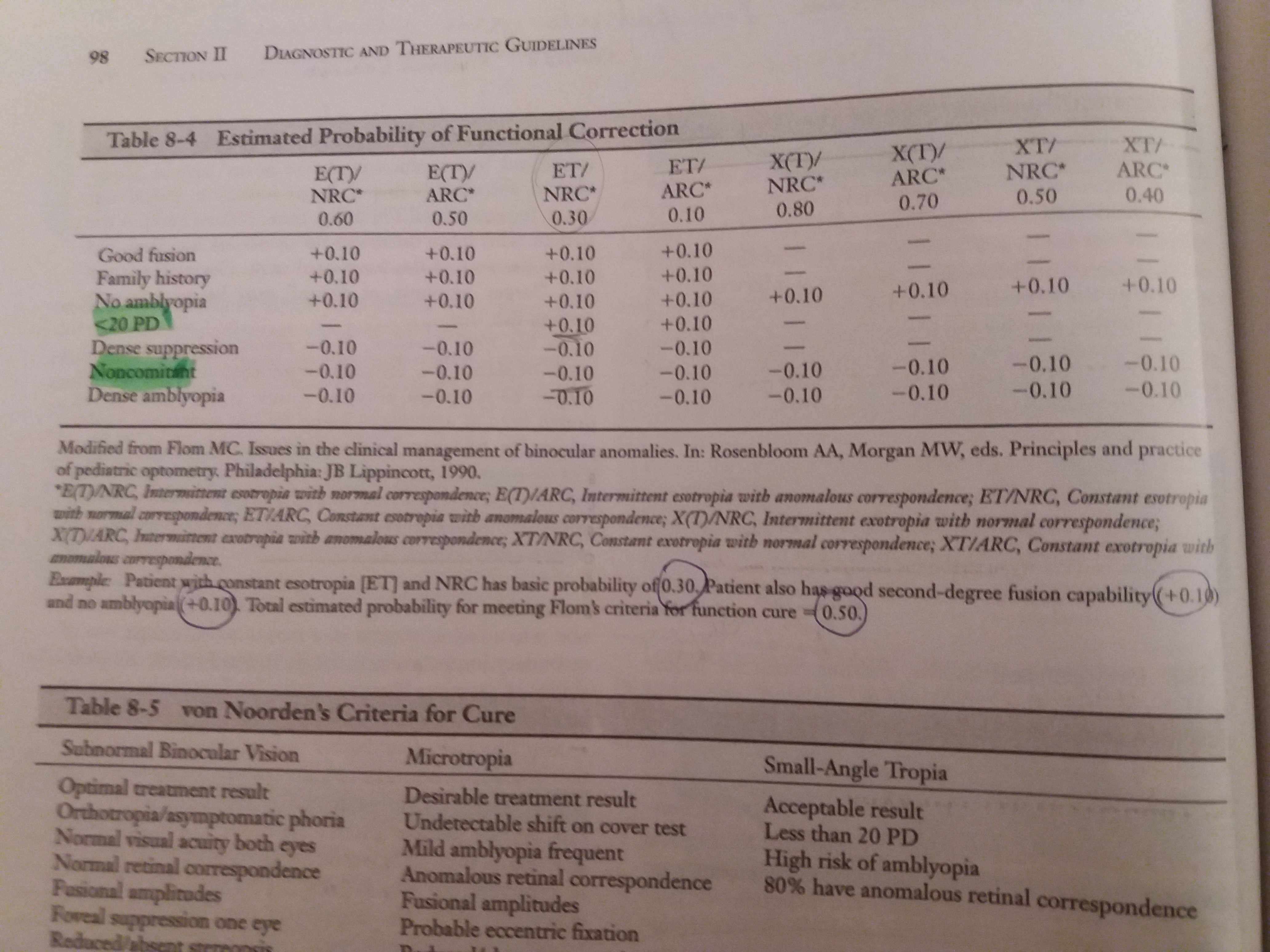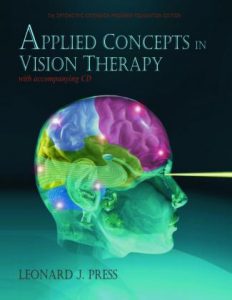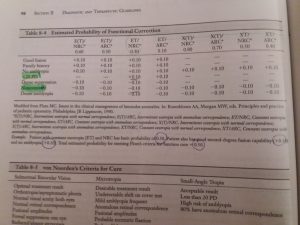
FAQ: Figuring out a prognosis for functional strabismus recovery
Having read the strabismus chapter of “Applied Concepts in VT”, I’ve found many encouraging but also discouraging quotes. Keep in mind that I mostly read this chapter with my own case in mind. This means that factors pertaining to my own case stand out more to me. Factors that might be immensely important to other patients’ cases and mentioned in the chapter are not necessarily mentioned in my list.
This table of probability allows one to calculate the odds of functional recovery of a strabismic based on his or her specific characteristics. It’s important to note that this table concerns people who never had surgery. It’s also useful to read this chapter more fully to understand which criteria are used to define functional recovery.
According to this table, for what it’s worth, I had a 30% probability of functional recovery. Unfortunately these odds have lowered considerably when surgery took place and induced vertical deviations and non-comitance.
+ ENCOURAGING QUOTES AND FACTORS
* The most encouraging phenomenon which I have also noticed throughout my years of VT experience is the “spread of comitance”. This is a very good evolution.
* I developed strabismus at age 3 due to unaddressed refraction issues: “If it can be established that the child had a period of normal binocular development as an infant, concerns about a critical period for development of binocular vision can be allayed.”
– DISCOURAGING QUOTES AND FACTORS
* Being a consecutive exotrope: “If the patient is a consecutive exotrope who, by definition, had esotropia before surgery, then the prognosis for functional cure decreases considerably”
* Being an alternator: “When a patient can alternate fixation willingly in free space and has no established fixation preference, elimination of strabismus is more difficult.”
* Having a surgically induced vertical deviation: “When extra-ocular muscles surgery has been performed, the normal innervational balance between yoked muscles is disrupted.”
* Having longstanding adult strabismus: “Because strabismus involves an elaborate departure from normal visual processing, it follows that its rehabilitation will be more elaborate than for most visual anomalies.”
This is bad news but I liked how nicely it was stated. Elaborate departure indeed!
CONCLUSION
My initial probability of functional recovery even as a young adult wasn’t too bad before surgery. Surgery, however, can be a real prognosis killer. Surgery can be damaging physically and applies a shock to the previously established strabismic adaptations. You especially want to avoid turning a life-long esotrope into a non-comitant consecutive exotrope. This will add years to a functional recovery if at all possible. As the years go by, the surgery recedes into the past and comitance spreads, my prognosis slowly improves again. The body slowly incorporates the blow and changes the surgery left me with. If nothing rocks the boat too abruptly and I am giving the time and opportunity I am bouncing back to my initial recovery odds and hopefully beyond. Whoever is reading this, learn from this because losing all this time, money and effort sucks!


Thanks for sharing! This was encouraging to me; I think my chances are good!
Good luck with your journey friend!
This article is great and has given me great hope for my daughter. And, makes me so satisfied that we have continued down the surgery road.
*have NOT continued down the surgery road.